.
Mt. Iyo イヨ山 – Mt. Nukazasu ヌカザス山 – Mt. Mito 三頭山
Distance: 11.4 km
Elevation change: 991 metres
Highest point: 1531 metres
Start: Ogouchi Jinja Bus Stop
Finish: Kazuma Bus Stop
Difficulty: ▅▅▅▅▅▅▅▅▅▅ ❹
Map: Yama to Kogen Chizu 山と高原地図 [No.25 奥多摩 OKUTAMA]
GPX TrackKML TrackGSI MAPPDF Topo Map
From a Floating Bridge to Mountain Top
Along with Mt. Gozenyama and Mt. Odake, Mt. Mito 三頭山 is one of the three famous mountains of Okutama. The mountain retains expansive areas of beech trees owing to the fact that the mountain was largely off-limits during the Edo Period. While the main access to the mountain is via Hinohara Tomin no mori 檜原都民の森 on the opposite side of the mountain, this hike follows a route from Lake Okutama.
At Okutama Station, take a bus headed for Miyama 深山橋. Get off at the Ogouchi Jinja bus stop 小河内神社 (30 minutes, 560 yen) alternatively, you can go a few stops further to the Miyamabashi bus stop 深山橋 and hike along the Murokubo Ridge ムロクボ尾根. Either way, both trails meet up at Mt. Nukazasu ヌカザス山 after a couple of hours of walking.
From the Ogouchi Jinja bus stop, mosey across the Lake Okutama floating bridge 奥多摩湖の浮橋 which takes you to the Okutama Circular Road on the opposite side. Once you hit the road, turn right and look for the trailhead veering up to the left, about a five-minute walk. The first section along the Nukazasu Ridge ヌカザス尾根 tracks through ubiquitous plantations, taking around an hour to reach Mt. Iyo イヨ山 (979 m). The next section steepens as you approach Mt. Nukazasu ヌカザス山 (1,175 m). From here to the summit of Mt. Mito (1,531 m), the trail has a noticeably sharper gradient, with ropes available to steady your footing. My hiking companion, whom I met on route, made it to the summit in a little under 3 hours, though we maintained a fairly steady pace.
Views from the summit include Mt. Fuji and Mt. Kumotori though it is somewhat forested. With the wind having died down, it also made for a good lunch spot with plenty of benches to kick back on. After lunch, I headed down to the Mitosan Refuge Hut 三頭山避難小屋 which is spacious and well-maintained. Nearby, there is a watering hole around a 10-minute walk along the trail towards the Mito Otaki Falls 三頭大滝. The waterfall itself is surprisingly high, cascading some 33 metres, and a suspension bridge allows you to get closer to the action. From the waterfall, head along the tourist trail to the Tokyo Citizen’s Forest, which is the entry point for most sightseers. If you wish to sidestep the Tokyo Citizen’s Forest, there is a minor trail junction about 15 minutes after the falls that shortcuts down to the road hairpin. Take the trail to the right, marked Keyaki-no-michi ケヤキの路.
The final section to the Kazuma bus stop 数馬バス亭 click here follows the river and eventually pops out on the Hinohara Kaido which you stick to downhill for a further 5 minutes for the trip back to Musashi Itsukaichi Station (1hr, 920 yen).
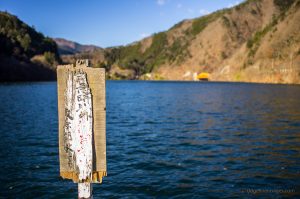
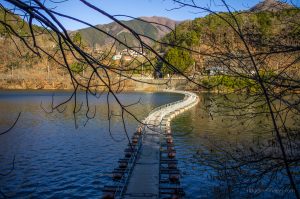
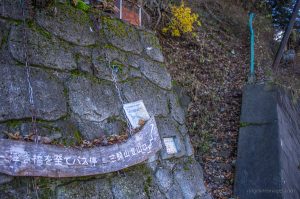
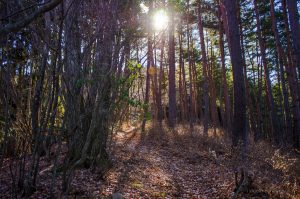
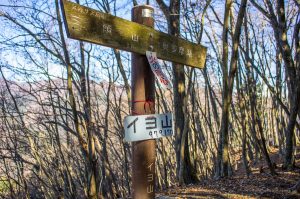
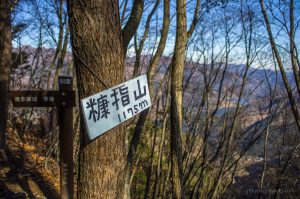

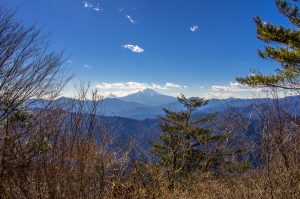
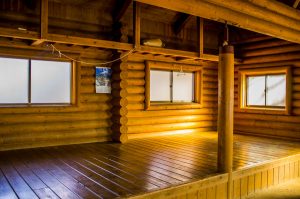
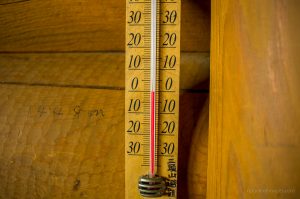
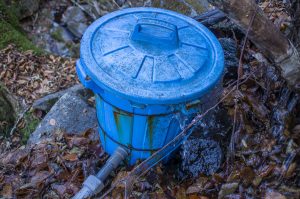
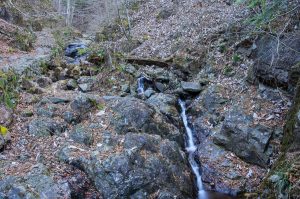
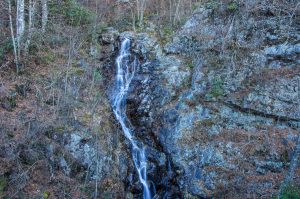
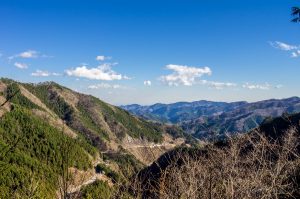

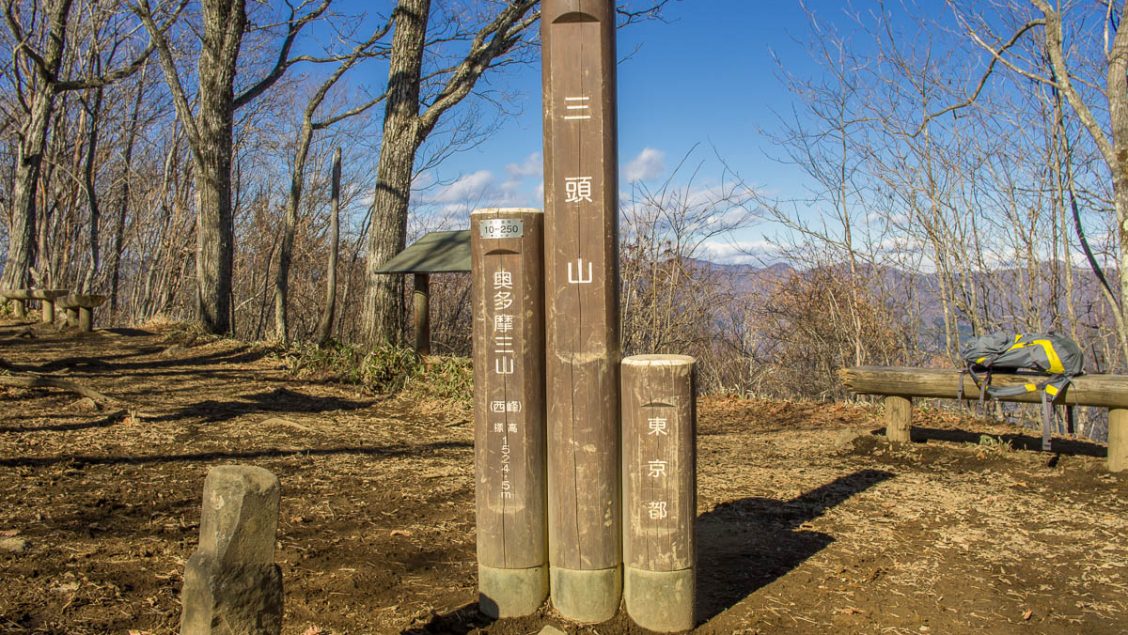






Thanks for this post. I did this hike last week, Monday, Sep 14, 2015. I only saw two people the entire 5 hours, which was wonderful. The only thing I wanted to add as a caution to others is that the last bus from the Tokyo Citizen’s Forest leaves at 16:30 (maybe 16:45). I came out of there at 18:30 to an empty parking lot. I started walking along the highway–this after a five-hour hike–with no idea which way to go nor how far it would be. Luckily a young couple picked me up and drove me 40km! to the nearest train station.
Good to hear you made it out safely! Though in future would definitely recommended verifying the bus timetables in advance and carrying a Yama-to-Kogen map as they show most of the main stops.
Thanks for the post David and the excellent information – as always. After doing this hike yesterday, I just thought I’d add a little footnote here for anyone considering doing the hike in the reverse direction – i.e. Mito san to Okutama. The beautiful beech groves have a downside in winter in that all those lovely leaves end up on the ground. Coming down the steeper sections heading towards Nukazasu and Iyo, this makes the going very treacherous indeed as the leaves cover exposed roots, loose rocks and old branches. The leaves obscure the path, which is also extremely narrow in sections and quite eroded with steep drops on both sides. If you are heading down this way, allow plenty of time and ensure you have adequate daylight.
Thanks for your wise words Adrian. Fallen autumn leaves certainly do hide potential hazards along with being slippery in the wet. With the shortest day of the year approaching (Dec 22nd) and the sun setting a little before 16:30 these days, its advisable more then ever to be carrying a headlamp for peace of mind.
I did this today–March 14, 2018.
The Floating Bridge is out, so I did the Murokubo Ridge trail. That was great. It is the most “natural” Japanese nature I’ve ever been in. Every other trail I’ve hiked is so improved and maintained that they often feel sterile. I really enjoyed hiking a mostly un-marked trail.
The ridge made for good sightseeing on each side.
The view of Fuji from Mito san was spectacular.
The descent, through the Tomin no mori, was nice, but had the usual trail improvements that turn me off. I also saw considerably more people on that side.
Snow and ice were hiding under leaves at the higher elevations. Kind of scary at times.
I had a near impossible time orienting my map and the maps on the trail in the Tomin no mori to the terrain–or even to the street outside the tomin no mori. (For the life of me, I can’t/couldn’t figure out how you came out at Kazumashita.) I’ve been using 1:25,000 maps and am planning to find the Yama to Kogen maps and try them. From what I’ve seen, the graphics are much better.
I exited the forest at the visitor’s center to find that the bus doesn’t run on weekdays until April! According to Google maps, there was no other way to the train but to walk. I started walking toward Itsukaichi, about 10 miles away. About 3.3 miles down the road, I was pleased to find out that the bus going by Kazumayu (onsen) was running. I had time for a bath before it came. That was great.
Today was fun. I think if I do it again, I will definitely hike on the Lake Okutama side again. On the descent, I’ll avoid the Tomin no mori and take one of the other trails down. A longer one would be good. I spent more time on trains and buses today than I did hiking.
Thanks for your detailed trip report Patrick. Nice to hear you enjoyed the Murokubo Ridge as it’s definitely the lesser used trail up to Mt. Mito. As you say on clear days the view from summit is pretty awesome. Another hiker mentioned the same difficulty locating the trail back to the Kazumakami bus stop. While the 1:25,000 maps are useful and I use them on my GPS they’re not overly hiker-centric with the location of bus routes and stops being a prime example. For the most part the Yama-to-Kogen maps are excellent and I recommend carrying one in either paper form or downloading it to your smartphone.
Have you seen any of those maps for sale lately? I’ve looked around a bit but haven’t found them anywhere. I checked the one store in Akiruno listed on a web site as being a dealer and they’d never heard of them. I live near the outdoor park in Akishima and none of those camping stores carry them either.
Thanks
Personally I’ve never had a problem tracking down a copy. Most large bookshops seem to carry them. If you’re passing through Tachikawa they’re available from Ishi Sports and failing that you can buy them through Amazon Japan. They’re updated annually with the new editions available from around April each year.
[…] is directly opposite the station exit) to Lake Okutama, the ever-helpful and inspirational blog https://ridgelineimages.com/hiking/mt-mito/ informed us to get a bus headed for Miyama and get off at Ogochi jinja bus stop. Please make sure […]
The watering hole near the hut is no longer there and i believe that is reflected I the latest Yama-to-Kogen maps. Dependable water source is further down towards the falls but is a pain to get back up. So instead, I needed to carry 4L of water when I went up to Mito from the same starting area and continued my hike along the ridge towards Jimba. There is water near Mt. Dohyodake at Hibara (N35° 41.666′ E139° 05.267′)
I want to add some information to your post.
– We saw a bear warning on the entrance to the route. We have not met a bear, but saw pretty big traces. Also we met something like a mountain goat (100% not a deer), pretty big.
– Instead of 5 hours, the route took about 11 hours for two girls, as one were not experienced in hiking.
– There’s no any shop or wending machine at the last bus stop near the lake, so the last chance to get a water is near the train station. Also there’s a small river after the lake, closer to the place where the route starts. And the next water we got was just before the waterfall, in a small stream, which is almost the end of the route.
So maybe better to bring with you as much as you can.
Iness, from the sounds of it you saw a Japanese serow or Kamoshika. Just for reference the hike duration is based on map (walking) time and does not include stops for rests – but well done anyway it’s a tough hike!
Hi Iness,
“We saw a bear warning on the entrance to the route.” I saw a bear last summer below Mt Iyo.
“something like a mountain goat (100% not a deer)” I’m pretty sure that was a “kamoshika”.
You’re right about water. I was hiking in Yamanashi the other day and didn’t bring as much water as I usually do because my first few miles to the trail and back from the trail were along roads through residential areas. I expected to find vending machines but there were none. And when I finally did come upon a vending machine, all it had was alcohol–and I don’t drink!
I hiked Mt. Mito in December of 2019. I started from Tamagawa Camp Village near the Kosuge river. I hiked up passed many dams and found a large Wasabi growing area. It was not always easy to find the trail. I eventually made it to the top of Mt. Mito and went down the backside hoping to find an Onsen. When I finally got to the road it was getting dark. Some very nice guy stopped and took me to an Onsen but it was closed. He was headed to Tokyo so he took me to the train station in Akiruno. I was very lucky or I might have ended up hiking all night!
The first time that I hiked Mt. Mito I started at the floating bridge. It was in the winter of 2017. No bears in the heart of winter! That time, I found an Onsen and took the bus to Akiruno. I really love hiking in Japan. It is challenging and also very beautiful!
Wanted to start the hiking season of 2021 and ended up choosing this trail (with minor changes regarding the end and the forced changes regarding the start) for the Sunday hike of 11/04/2021. It was also featured in that little booklet that came with 山と高原地図 for 奥多摩.
First things first, a warning for other hikers: the bridge from Ogouchi-jinja is closed until further notice. Citing something about water levels. It’s not a big deal, since you can walk around and use the 深山橋 bridge which is mere 2 kilometers away from the floating bridge. Of course, if you want to go with the original trail, this would mean a 4km detour but if you stay on the bus, it’s just 2km of a flat asphalt road, and a very scenic one! And if you’re willing to use the other start, then it’s even closer. I was blessed with a clear and warm spring weather and so decided to stretch my legs a bit. If it wasn’t for the horde of motorcyclists, it would have been absolutely perfect.
The trail itself is not very special, quite forested with infrequent openings that provide decent views. There are plenty of flat sections though so you get plenty of time to relax and just enjoy the walk. Most people seem to come from 都民の森, so until 三頭山 itself I was almost alone, aside from maybe 3 other people.
The first few kilometers though have made me remember how out of shape I’ve gotten during the winter of staying at home 😀 Doesn’t help that the trail starts with a rather steep incline. Glad I chose this one and not something more difficult.
Another reason for worrying was the bus from 都民の森. The line generally runs when the park facilities are open. Currently they are closed due to corona. However, the nishi-tokyo bus website claimed that they will run the bus regardless of that these days. And thankfully, this is the case. Make sure to check their website before going though, lest you want to hike back to Okutama station or bother strangers to help you get back to Tokyo.
P.S. those bear signs in Okutama make me consider buying a bear spray.
Much thanks for the hike report Alex. The 1,000 metres in elevation gain should stand you in good stead for those that follow. Interesting to hear the ‘drum can bridge’ is still out of action – must be at least a year now. And yes, the noise generated by those motorcyclists is a royal pain. Wouldn’t be too concerned, there must be a thousand bear signs for every actual bear roaming around Okutama!
Nice report.
You mentioned two mistakes I’ve made on that trail.
I have gotten off the bus at the bridge and walked around the lake. The lake is super-low these days.
I’ve also gotten to the Citizens Forest to discover there is no bus. I thought I would have to walk to Musashi Itsukaichi! I was pleasantly surprised to find out that the buses were running as far as the Kazuma no Yu onsen when I got there. (I think that’s year-round.)
I have seen a bear on that trail. It ran across my trail when I was in Kawano. I am so glad it wasn’t running after me because that sucker was fast! I told the people at the Okutama Visitor’s Center but they weren’t impressed.
ps, Thanks, David for keeping your site going for so long. It’s helped me so much.
Thank you for this website, really useful information!
I did this hike today June 18th 2022
I will add a few points that could help some people:
1) There’s actually two tops of Mitosan, east summit and west summit (it’s indicated which is which when arriving close to the top). West is the main one, East is not worth it and it will save you 10min and energy (up and down)
2) David you mentioned after the Mitosan refuge hut you followed the trail towards Mito no Otaki Falls. Did you retrace a few steps and turned right? Or continued straight and then took the falls trail (to the left) at the intersection? Both will lead to the falls but the latter is a bit longer and there’s no explicit direction at the hut that continuing straight will lead to the Mito no Otaki falls trail, so it can be a little confusing.
3) After the bridge towards the end, how did you manage to come out of the trail at the bottom part of the car road hairpin? Arrived at the main car park (top part of the hairpin) and I didn’t see any intersection while walking the forest trail.
Thanks for the comment, Roger. Regarding your second point after descending to the refuge hut I retraced a few steps and turned right at Mushikari-toge ムシカリ峠. If you follow this trail, there’s a small water source and as you mention it’s the most direct path to the falls. As for the last point I’ve updated the trail notes to describe this shortcut more clearly. About 15 minutes after the falls there is a trail junction marked Keyaki-no-michi ケヤキの路 that shortcuts down to the road hairpin. Check this Yamareco report for a photo of the junction.
Thanks a lot for the update!
By the way, the floating bridge was open as of today.
That’s a nice mountain, isn’t it?
BTW, there are actually three peaks. I had been familiar with Mito for several years before I realized that and made the connection to the name. “三頭” means three heads/peaks.
The bridge goes in and out of use quite frequently. It’s good to doublecheck with the bus driver at Okutama Station. I’ve walked all the way around the lake to the trailhead from the Oguchi Bus Stop once or twice.